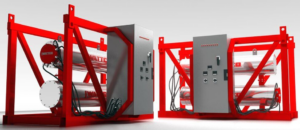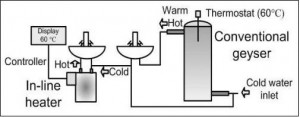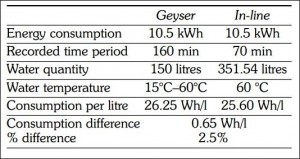All about In-Line Heaters
Last updated on May 16th, 2025 at 08:03 am
In-line heaters, AKA tankless heaters, see frequent use in petrochemicals industry in location s like Oklahoma or Kansas for heating oil, water and hazardous chemicals. These electric immersion heaters work on the basic principle of heat flow i.e. heat keeps flowing form a hot body to cold body until equilibrium is achieved. Just like conventional geysers, cold fluid flows in and heated medium flows out of the in-line heating system constantly.
In-Line Heaters
Although inline heating systems follow the same working principle as conventional geysers, inline heaters differ greatly in construction from conventional heating systems. The first and most important difference that makes inline heaters more efficient than other heating systems is its thankless base.
With no tank or base, heated fluid is instantly routed to the system where it is needed. This reduces the heating time. Moreover, there is no need to store the fluid as the outlet of these heaters can connect directly to the main system; therefore there are almost no storage losses in inline heaters. 
Difference between Conventional Geyser and In-line Heaters
Inline heaters also have heating coils. Although the number of coils may vary with the type of the heater, the basic inline heater has two coils. The first coil or the transmission coil is meant to carry the cold fluid into the heater and route the heated fluid to the system.
While the second coil or the heater keeps on rotating inside the heating system and is meant to heat the fluid to the desired temperature. Sensors and switches are also some of the major heating elements of the inline heaters. A typical tankless heating system has pressure and temperature sensors to ensure proper heating of the fluid. Upon reaching the desired temperature the heating coil stops rotating and the heated fluid is routed to its destination.
Types
All inline heating systems have thermocouple sensors which monitor the heating procedure. Often these heaters have thermal insulation to make the heating procedure more precise and less time-consuming. This also depends on the type f the fluid. For example, in case of hazardous chemicals or corrosive fluids, insulation is necessary.
Moreover there is no base to reduce the risk of fluid leakage. Therefore protective types of insulation are use to reduce the risk of accidental leakage. Terminal enclosures and material of heaters may vary with the area of application. Drain valves and small outlets are also available to facilitate the process of maintenance.
Also read: When should we use Inline Heaters?
Energy Consumption Comparison: Conventional Geyser Vs In-Line Heaters
According to experimental studies the average current required by an inline heater during one cycle is 44.6 A with a flow rate of about 5l/min. A side-by-side comparison of conventional geyser and inline heaters show that inline heaters can heat more fluid consuming the same amount of power. Here is a quick look at the comparison table: 
Industrial Applications
Industrial applications of inline heaters include extensive heating of corrosive and hazardous fluids. These heating systems are also popular in chemical manufacturing, oil extraction and other petrochemical industries.
Ilan Toledano is the Vice President of Marketing and Sales, North America, at Wattco, Quebec, Canada. A maker of electric heating elements and controls. To learn more from Wattco, call (800) 492-8826 or visit www.wattco.com.
